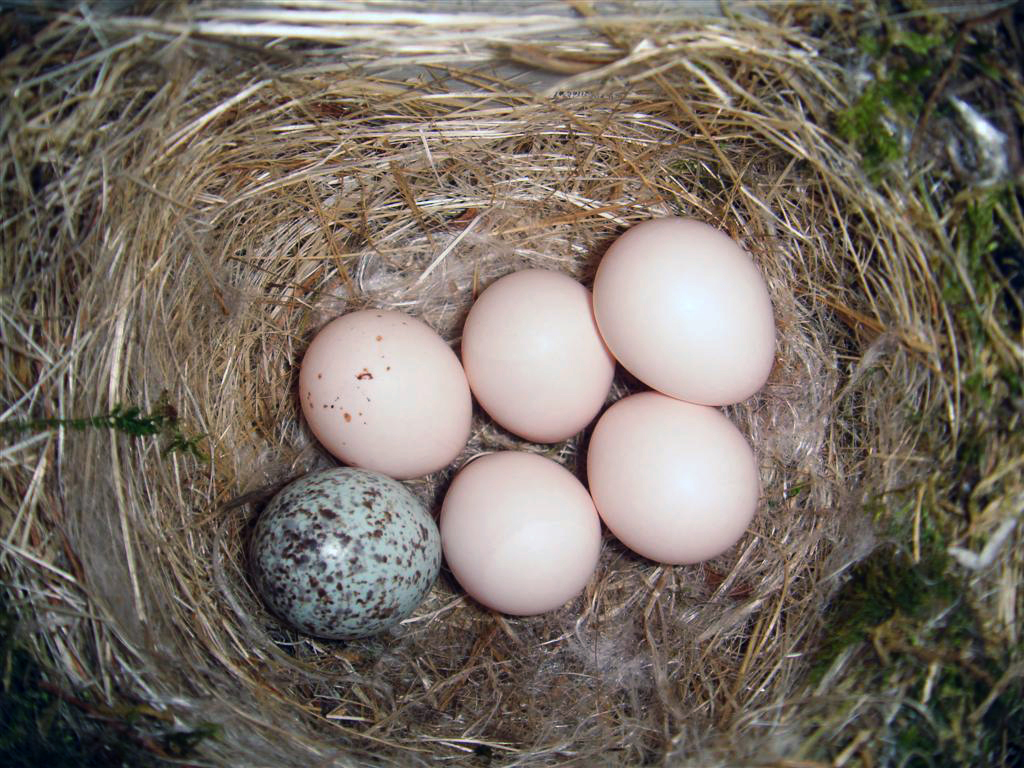Brood parasites are birds that lay their eggs in other birds’ nests, tricking the host parents into feeding and caring for the parasitic offspring. Common examples of brood parasites include cuckoos and cowbirds. Different birds seem to adopt different strategies for getting their young raised by unwitting foster parents, depending largely on how long the host/parasite relationship has existed.

Eastern Phoebe nest with one Brown-headed Cowbird egg
By Galawebdesign, June 2007.
Consider the brown-headed cowbird (Molothrus ater), which chooses from among over two hundred host species. The cowbird appears to make little effort to disguise its eggs, and given the wide range of hosts it uses, it wouldn’t make much difference if it did. There seem to be two factors involved in keeping cowbird eggs safely tucked into their host nests. One, the cowbird-host relationship is relatively young, evolutionarily speaking, and the hosts haven’t yet learned to be suspicious of odd-looking eggs. Second, cowbirds are known to retaliate against hosts who reject their eggs by destroying the entire host nest. Would more ancient parasitic relationships require different strategies?
Claire Spottiswoode and Martin Stevens of the University of Illinois chose as their study animal, the cuckoo finch (Anomalospiza imberbis), which has been sneaking its eggs into tawny-flanked Prinia (Prinia subflava) nests for the past twenty million years. Unlike the hosts employed by the cowbirds, Prinias are very good at spotting and rejecting interloping eggs. The scientists discovered that Prinias use many visual cues, including patterning, color, and luminance to detect the forgeries. But just as the hosts have gotten better at picking out the fakes, the cuckoos have gotten better at mimicking the originals. Thus, compare the counterfeiting ability of the cuckoo finch below, with that of the cowbird above.

Left: Researchers are in the process of setting up the egg rejection experiment, taken by Tim Dee.
Right: Prinia eggs in left column and cuckoo finch eggs in right column, taken by Claire Spottiswoode.
Ever wonder if your blog reaches anyone? Is it worth your time and effort? The answer to the first question is "yes". I am preparing a presentation on brood parasitism for the bird club at our local high school. Useful stuff yours. Thanks!
ReplyDeleteThank you so much for saying so! I'm glad I could help with your project.
ReplyDelete